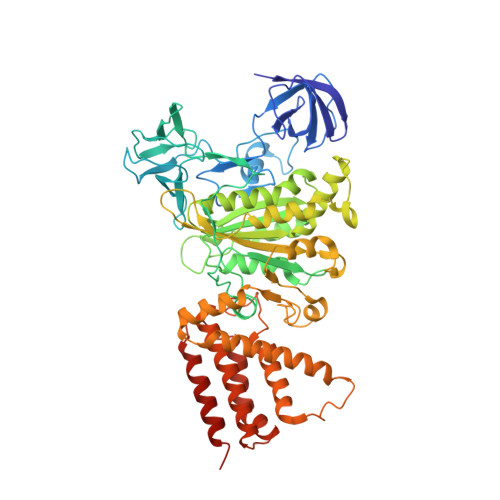Design of allosteric sites into rotary motor V 1 -ATPase by restoring lost function of pseudo-active sites.
Kosugi, T., Iida, T., Tanabe, M., Iino, R., Koga, N.(2023) Nat Chem 15: 1591-1598
- PubMed: 37414880
- DOI: https://doi.org/10.1038/s41557-023-01256-4
- Primary Citation of Related Structures:
8IGU, 8IGV, 8IGW - PubMed Abstract:
Allostery produces concerted functions of protein complexes by orchestrating the cooperative work between the constituent subunits. Here we describe an approach to create artificial allosteric sites in protein complexes. Certain protein complexes contain subunits with pseudo-active sites, which are believed to have lost functions during evolution. Our hypothesis is that allosteric sites in such protein complexes can be created by restoring the lost functions of pseudo-active sites. We used computational design to restore the lost ATP-binding ability of the pseudo-active site in the B subunit of a rotary molecular motor, V 1 -ATPase. Single-molecule experiments with X-ray crystallography analyses revealed that binding of ATP to the designed allosteric site boosts this V 1 's activity compared with the wild-type, and the rotation rate can be tuned by modulating ATP's binding affinity. Pseudo-active sites are widespread in nature, and our approach shows promise as a means of programming allosteric control over concerted functions of protein complexes.
- Research Center of Integrative Molecular Systems (CIMoS), Institute for Molecular Science (IMS), National Institutes of Natural Sciences (NINS), Okazaki, Japan. takahirokosugi@ims.ac.jp.
Organizational Affiliation:



















